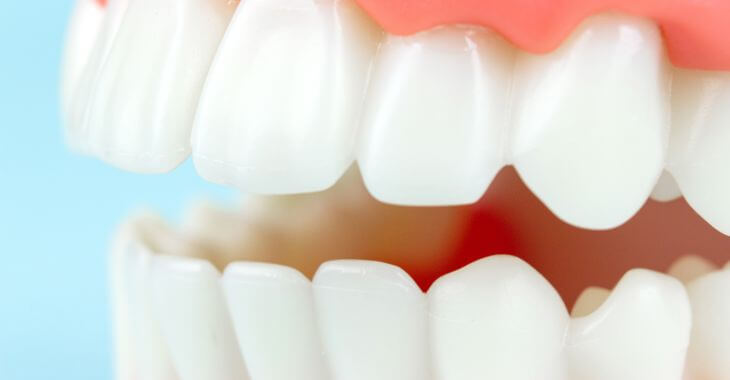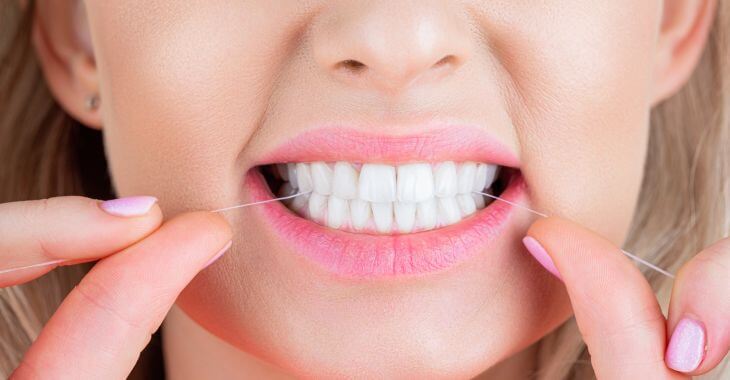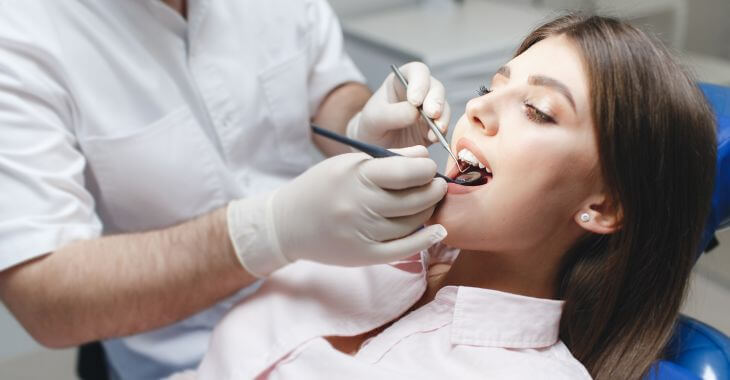Why Do Humans Have Canine Teeth?

Have you ever wondered why do humans have canine teeth? While we certainly are not canines, we do have the pointy teeth that are associated with our canine and mammal counterparts. What are the reasons we have both pointy teeth and flat molars?
Many mammals have canine teeth, the longer, pointed “fangs” that you see in dogs, wolves, cats and many other animals. Many mammals that have canines are meat-eaters, but not all of them. All primates have canine teeth, including humans, even primates that do not eat meat.
Canine teeth come in all shapes and forms in mammals – did you know that elephant tusks are enlarged canine teeth? Human canine teeth are amongst the smallest in the mammal world in comparison to the other teeth, so why do humans have canine teeth?
Canine Teeth Basics
Canine teeth or cuspids are located in front of the molars and next to the front incisors in the human mouth. The length of canines in humans varies from person to person – some people have very prominent cuspids while others have canines that are barely longer than other teeth.
There are four canines or cuspids in the human mouth, two on the top and two on the bottom. There are four incisors between the two cuspids, the front teeth on both the upper and lower jaw. These teeth are noticeably more pointy at the crown and tend to have longer roots below the gumline.
Canine teeth arrive for most children by the time they are two years old, usually between months 16-23. The baby canine teeth will remain in the mouth until around years 9-12 when they are shed. The adult canine teeth erupt shortly after the baby teeth fall out, usually by age 12.
Function of Canine Teeth
There are many theories about what canine teeth are used for in humans. These pointy teeth are longer than the rest of the teeth and often are the largest teeth in the mouth. While cats and dogs may use their long canine teeth to tear into the meat they eat, humans may have other uses for canine teeth.
It is believed that canine teeth were a defensive tool for early humans. Earlier humans had longer canine teeth than modern humans, which could have been used as weapons. It is believed they were also used to fight for mating rights among the males of our species.
Canine or cuspid teeth allow for tearing, whether you are eating a steak or trying to open a package tightly wrapped in cellophane. But because human canines are much smaller than these pointy teeth in other mammals, we can also use rotary chewing to eat a variety of foods.
The cuspids are anchor points for your teeth. Beyond defensive or tearing functions, canine teeth are now an important part of your oral health. They contribute to speech and are needed for proper bite alignment, which is why it is important to keep these teeth healthy.
Maintaining Canine Teeth – Human Oral Health
Like all human teeth, the cuspids need to be kept clean to maintain them for a lifetime. Food debris can become caught in between teeth which feeds bacteria inside the mouth. If not removed, bacteria can cause plaque and tartar to accumulate on the teeth, which can result in decay and gum disease.
The best way to keep strong, healthy canine and other teeth is with routine oral hygiene paired with professional dental care. Canine teeth are especially prone to receding gums due to gum or periodontal disease, which can result in bone and tooth loss if not treated. Tips for maintenance include:
- Brush all your teeth thoroughly, including your canine teeth, at least twice a day.
- Floss between all teeth at least once per day – adding a water “pic” can also be helpful.
- Eat a healthy diet – teeth need calcium and other minerals to stay strong, as well as other nutrients.
- Undergo professional dental cleanings at least twice per year to remove tartar and maintain gum health.
- Visit your dentist for regular checkups and exams at least once per year to keep teeth repaired.
- Avoid smoking and tobacco products which can impact oral health.
Caring for your canine and other teeth can help you maintain your smile and oral function. Since canine teeth are very prominent and have specialized uses, you want to ensure that you keep them healthy throughout your life to maintain a complete, beautiful and functional smile.

Why do humans have canine teeth? Like most mammals, we have canine teeth for their ripping ability but they are also vital for other oral functions. Regardless of what canine teeth are used for, it is important to make sure to keep these pointy teeth clean and healthy with routine oral care.
The information provided on this website, including text, graphics, images, and other materials, is intended solely for informational purposes and should not be used as a substitute for professional medical advice, diagnosis, or treatment.


)